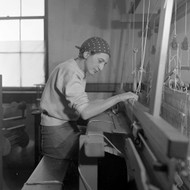Author: Joanna Steel
Published: 1st Jul 2025
The Archive of Anni Albers
All good things must come to an end.

REFLECTING ON A DECADE-LONG COLLABORATION
A DECADE OF DESIGN: HONOURING ANNI ALBERS


NEVER OLD, NEVER NEW
She is inspiring. I find her fascinating, incredibly innovative, ahead of her time, eclectic in a very disciplined manner

BAUHAUS BEGINNINGS AND MODERNIST LEGACY
THE LIFE AND WORK OF ANNI ALBERS




The shapes and colours evoke the instruments tuning up, the elegant velvet and lace dresses of the women attending the performance, and other memories


